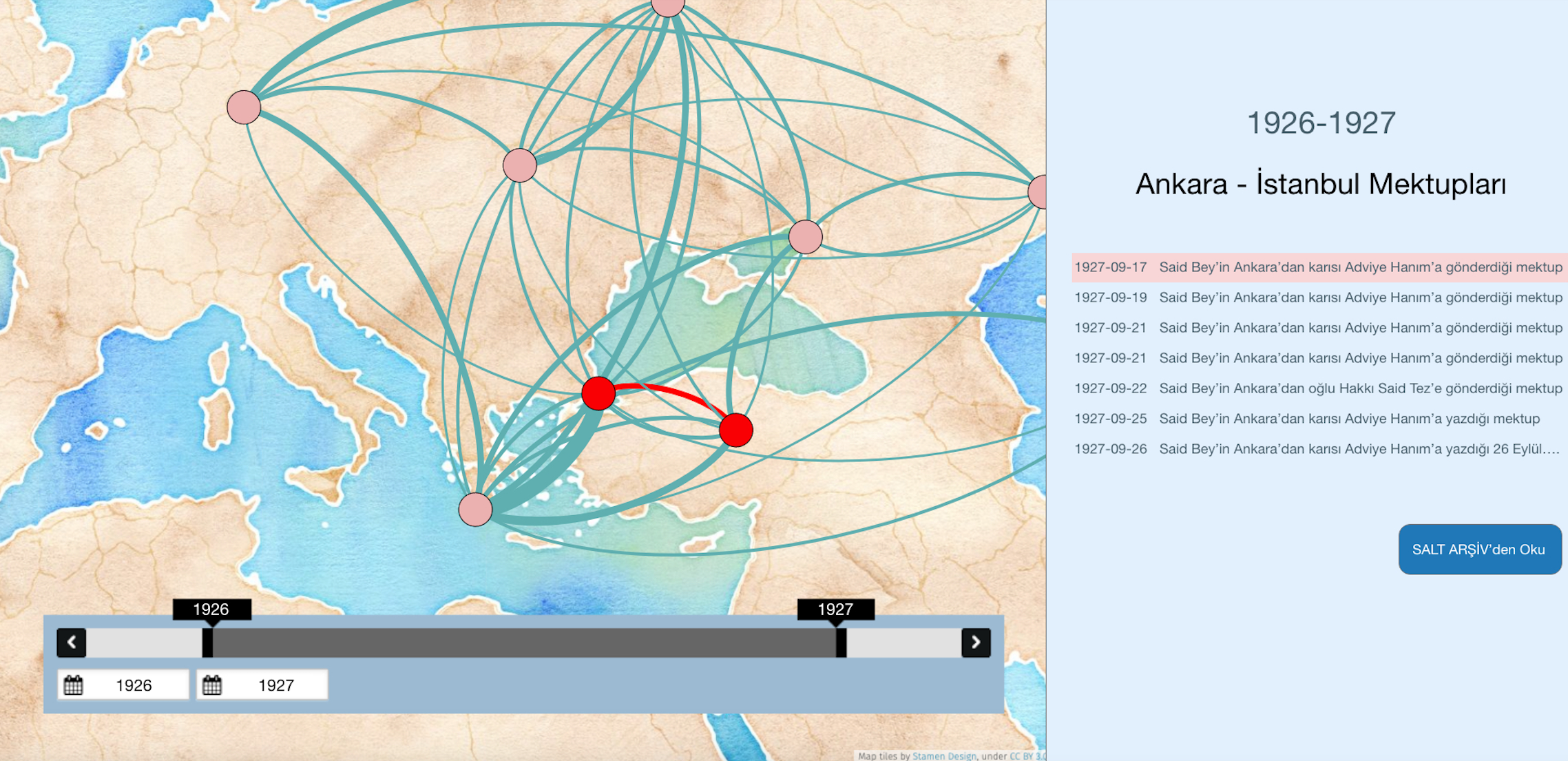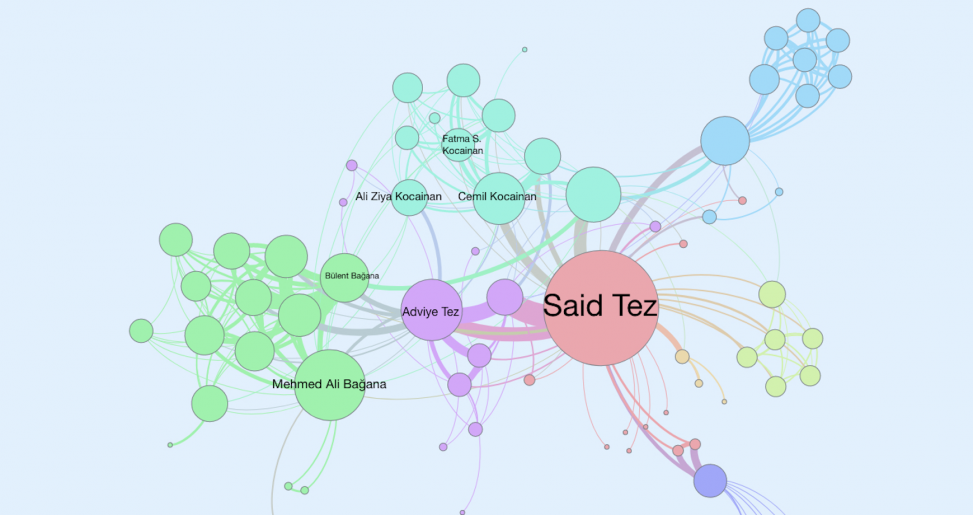Concept is designed for Salt Research
ABSTRACT
In the research, it is aimed to analyze the data set consisting of 209 letters belonging to three families in the Sait Bey section of the Salt Research Archives by using machine learning and data visualization techniques. Can we contribute to the archive-oriented document and history readings? Can we reveal some insights into the life and social conditions of the late Ottoman period by the computational methods? Those are the main questions driving the research. The creative ways of facilitating our understanding of people, relationships and events in the archive will be researched and applied to tell meaningful stories.
 BACKGROUND
BACKGROUND
Analysis of letters is one of the problem domains regarding the exploratory data analysis in the field. In different archive institutions, there are many priceless letters and correspondence text datasets which belong to some historical figures from the different periods of history. Within the relationship network of those figures, letters tell a lot more than just personal family stories. They are also revealing some social meaning and socio-cultural background about their time period. Analysing this letter arhives with computational social science methods is crucial to be able to expose hidden relationships between the letters, people, relations, locations and time.

METHOD
A well-designed interface acts as a translator between the data set and the researcher. It provides faster access to the big picture and meaningful inferences. In this sense, research brings together the methods of data visualization and computational social science disciplines. When organized in different ways, the same data begins to tell different stories. Different forms of organization such as timeline, locations, people, relations, stories and images will be constructed as required by the research narrative. The implementation of research will be carried out in a multi-layered manner with different approaches such as machine learning, social network analysis, network mapping, timeline and geographic mapping.

Comments are closed.